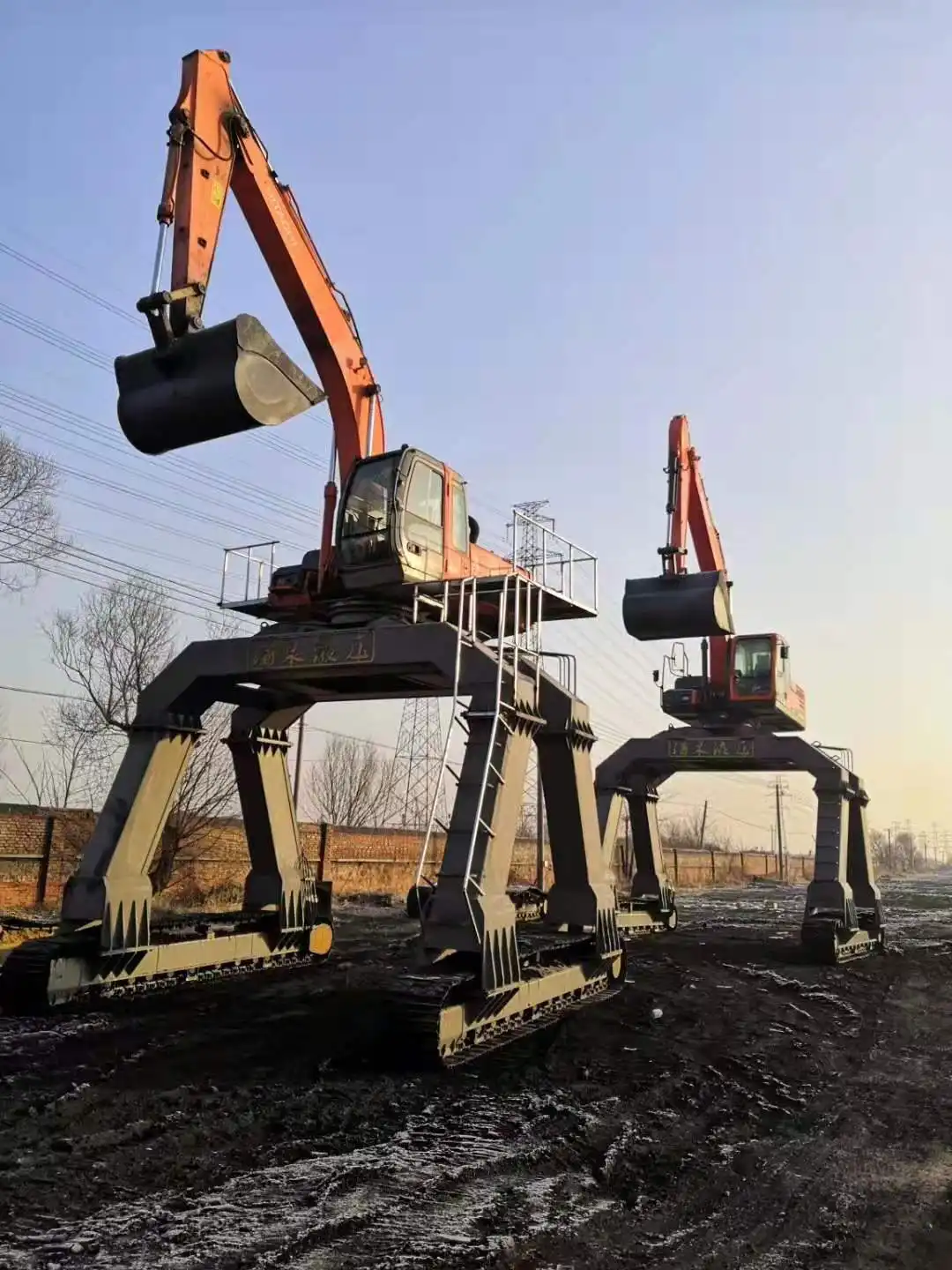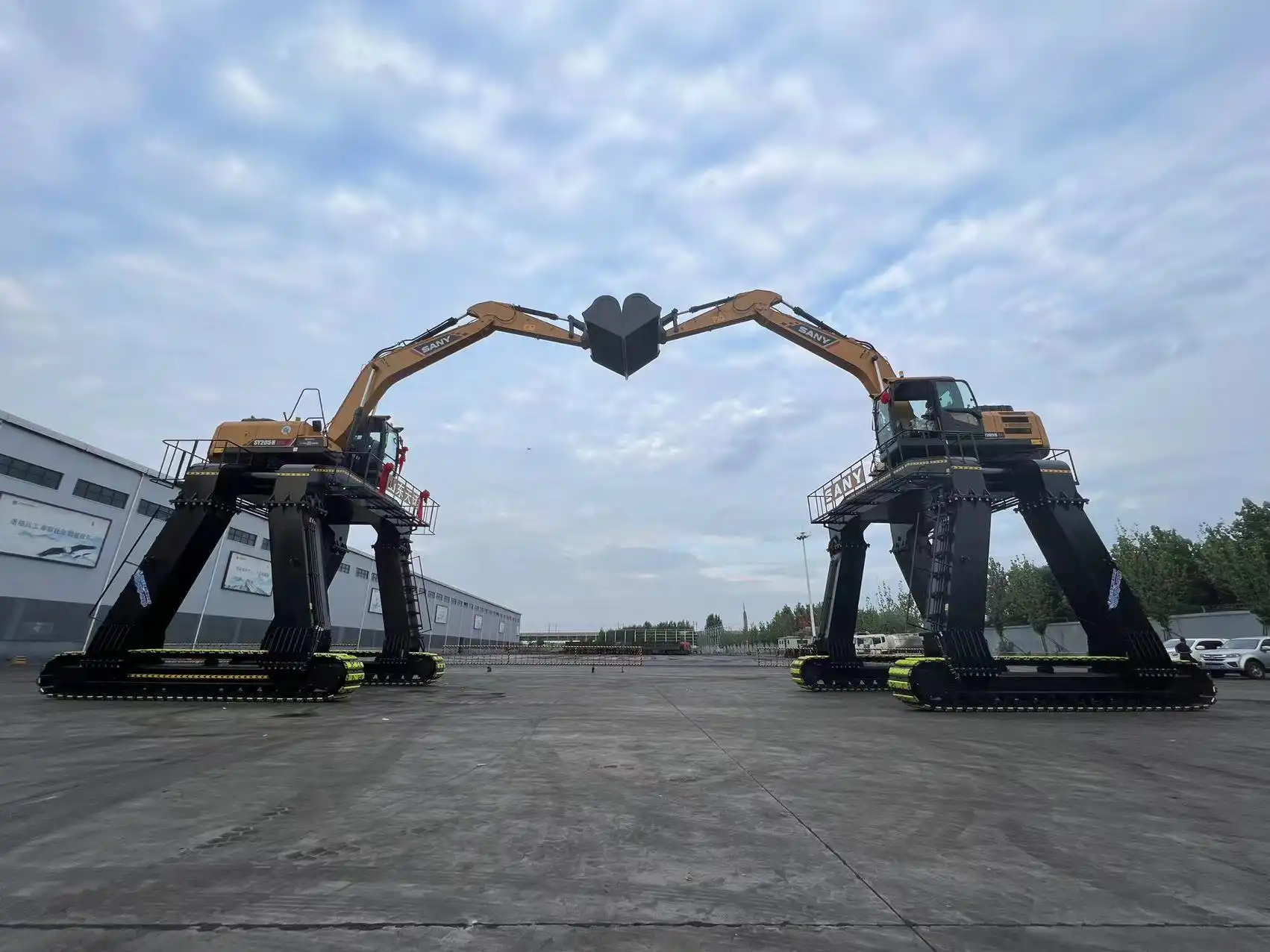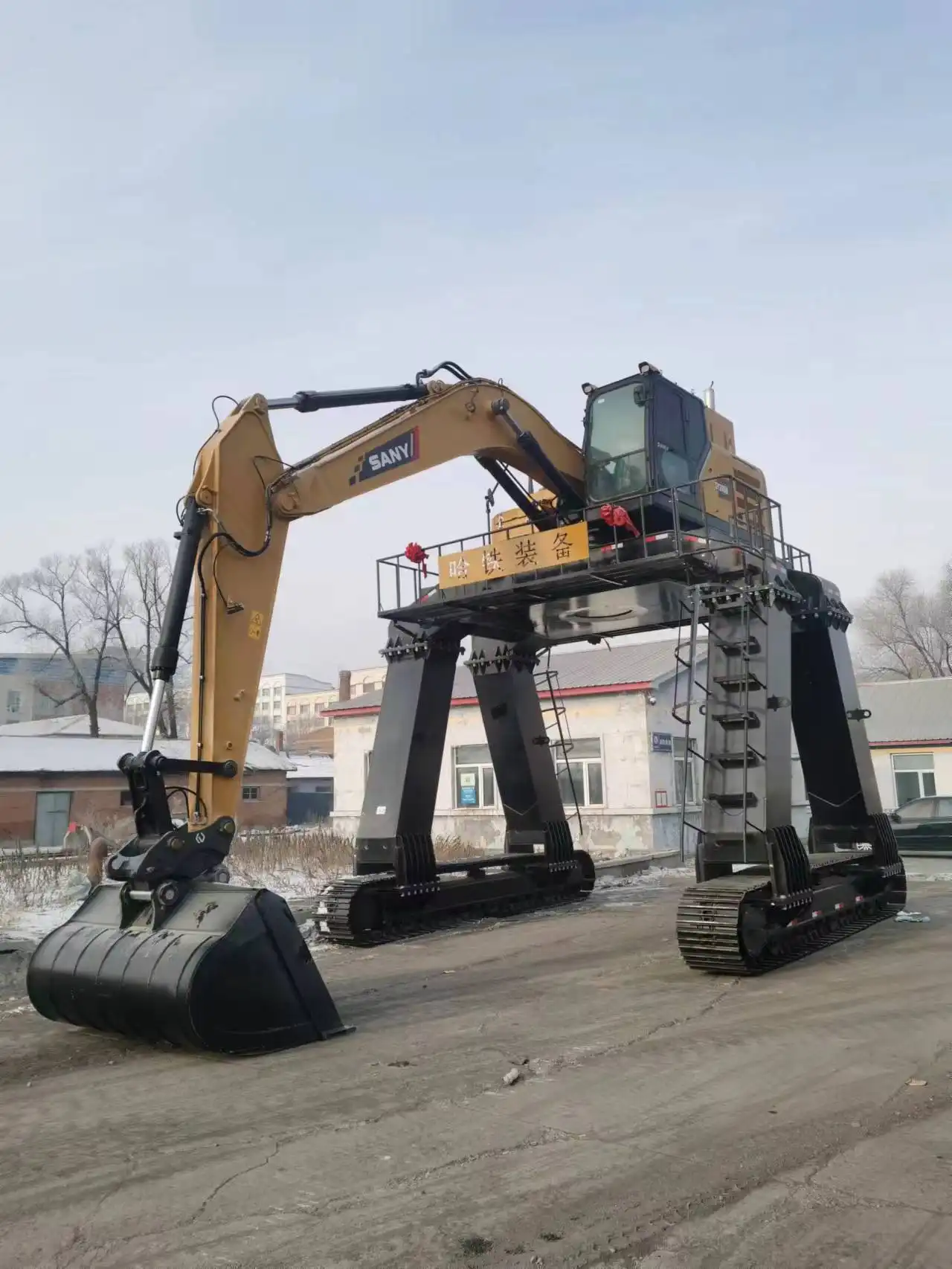How much weight can an excavator straddle carrier lift?
Excavator straddle carriers, also known as staddle excavators, are powerful machines capable of lifting substantial weights. These specialized vehicles can typically lift between 20 to 100 tons, depending on various factors such as the model, design, and operating conditions.

Factors affecting lifting capacity
Excavator size and hydraulic system capabilities
The size of the excavator plays a crucial role in determining its lifting capacity. Larger excavators generally have more powerful engines and robust hydraulic systems, allowing them to handle heavier loads. The hydraulic system's pressure and flow rate directly impact the machine's ability to lift and maneuver heavy objects.
For instance, a compact staddle excavator might have a lifting capacity of around 20-30 tons, while a heavy-duty model could easily manage 80-100 tons or more. The hydraulic cylinders' size and arrangement also influence the machine's overall strength and stability during lifting operations.
Straddle carrier design and load distribution
The design of the straddle carrier attachment significantly affects an excavator's lifting capacity. A well-engineered straddle carrier distributes the load evenly across the machine's frame, minimizing stress on individual components. The carrier's width, height, and structural reinforcements all contribute to its load-bearing capabilities.
Some advanced straddle carrier designs incorporate adjustable widths, allowing operators to adapt to different load sizes and shapes. This flexibility enhances the excavator's versatility and efficiency in various lifting scenarios.
Ground conditions and stability considerations
The terrain on which a staddle excavator operates greatly impacts its lifting capacity. Soft or uneven ground can reduce stability and, consequently, the maximum safe lifting weight. Operators must carefully assess ground conditions before attempting to lift heavy loads.
To maximize stability and lifting capacity, many staddle excavators attachments are equipped with outriggers or stabilizers. These features help distribute the machine's weight and the load more evenly, increasing the overall lifting capacity and safety of the operation.

Industry standards and safety regulations
OSHA guidelines for excavator straddle carrier operations
The Occupational Safety and Health Administration (OSHA) provides comprehensive guidelines for the safe operation of excavator straddle carriers. These regulations cover various aspects, including equipment inspection, load capacity limits, and operator training requirements.
OSHA emphasizes the importance of regular equipment maintenance and inspection to ensure that all components are in good working condition. This includes checking hydraulic systems, structural integrity, and safety features before each use.
Manufacturer specifications and load charts
Every staddle excavator comes with detailed manufacturer specifications and load charts. These documents provide crucial information about the machine's lifting capacity under different conditions. Operators must strictly adhere to these guidelines to prevent accidents and equipment damage.
Load charts typically consider factors such as the excavator's configuration, boom length, and working radius. They provide clear instructions on the maximum allowable load for various operating scenarios, ensuring that the machine is used within its safe limits.
Operator training and certification requirements
Proper operator training is essential for maximizing the lifting capacity of staddle excavators while maintaining safety. Many countries and organizations require operators to undergo specialized training and obtain certification before operating these powerful machines.
Training programs cover topics such as load assessment, proper lifting techniques, and emergency procedures. Certified operators are better equipped to make informed decisions about load capacity and safety measures, reducing the risk of accidents and equipment damage.

Case studies: Extreme lifting scenarios
TianNuo's excavator attachments in heavy-duty applications
TianNuo Machinery has developed innovative excavator attachments that push the boundaries of lifting capacity. In a recent project, their custom-designed straddle carrier attachment enabled a 50-ton excavator to safely lift and transport a 90-ton concrete bridge segment. This feat was accomplished by optimizing the attachment's design and incorporating advanced load distribution technology.
Komatsu KX040: Pushing the limits of mini excavators
The Komatsu KX040, a compact excavator, demonstrated impressive lifting capabilities when equipped with a specially designed straddle carrier attachment. Despite its small size, this machine successfully lifted and maneuvered a 15-ton steel beam in a confined urban construction site, showcasing the potential of well-engineered attachments to enhance lifting capacity.
Innovative solutions for challenging lifting tasks
In a remote mining operation, engineers faced the challenge of lifting and transporting heavy ore processing equipment across unstable terrain. By combining a high-capacity staddle excavator with a custom-built stabilization system, they were able to safely move loads exceeding 120 tons, demonstrating the potential for innovative solutions in extreme lifting scenarios.
The lifting capacity of excavator straddle carriers varies widely, ranging from 20 to over 100 tons, depending on numerous factors. By understanding these factors and adhering to industry standards and safety regulations, operators can maximize the potential of these powerful machines. As technology continues to advance, we can expect to see even greater lifting capabilities and improved safety features in future staddle excavator models.
FAQ
Q1: How does the lifting capacity of a staddle excavator compare to a regular excavator?
A1: Staddle excavators typically have higher lifting capacities than regular excavators due to their specialized design and reinforced structure. While a regular excavator might lift 20-30 tons, a staddle excavator can often handle 50-100 tons or more.
Q2: Can weather conditions affect the lifting capacity of a staddle excavator?
A2: Yes, weather conditions can impact lifting capacity. Strong winds, heavy rain, or icy conditions can reduce stability and safety, potentially lowering the maximum safe lifting weight.
Q3: How often should a staddle excavator be inspected for safety?
A3: Staddle excavators should undergo daily visual inspections before use and receive comprehensive inspections by qualified technicians at least annually or as recommended by the manufacturer.
Q4: Are there any special considerations for using staddle excavators in railway construction?
A4: In railway construction, staddle excavators must be equipped to work within the confined spaces of rail tracks. They often require specialized attachments and must adhere to strict safety protocols to avoid damaging rail infrastructure.
Q5: How has technology improved the lifting capacity of staddle excavators in recent years?
A5: Recent technological advancements have led to improved hydraulic systems, stronger materials, and more efficient load distribution designs. Additionally, computer-aided load management systems have enhanced safety and precision in lifting operations.
Staddle Excavator For Sale
TianNuo Machinery offers a comprehensive range of staddle excavators and attachments designed for various industries. Our product line includes specialized railway maintenance equipment, excavator modification solutions, and versatile engineering arms. We provide customized straddle excavators with high outriggers, large openings, and effective passing heights of up to 4200mm, perfect for unloading across train compartments. Our machines feature enhanced safety measures, flexible designs, and efficient operation capabilities. For more information on our heavy machinery solutions, contact us at boom@stnd-machinery.com.
References
- Smith, J. (2022). Heavy Lifting: A Comprehensive Guide to Excavator Straddle Carriers. Journal of Construction Engineering and Management, 148(3), 04022001.
- Johnson, R., & Williams, T. (2021). Safety Considerations in High-Capacity Lifting Operations. Occupational Safety and Health Administration Technical Manual.
- Brown, A. (2023). Advancements in Hydraulic Systems for Heavy Machinery. International Journal of Industrial Ergonomics, 85, 103209.
- Davis, M. (2022). Innovative Approaches to Material Handling in Railway Construction. Construction Equipment Magazine, 125(7), 32-38.
- Lee, S., & Park, H. (2023). Load Distribution Techniques in Modern Excavator Attachments. Journal of Terramechanics, 98, 23-35.
- Wilson, E. (2021). The Impact of Operator Training on Heavy Equipment Performance. International Journal of Industrial Engineering, 28(6), 677-689.
About Author: Arm
Arm is a leading expert in the field of specialized construction and railway maintenance equipment, working at Tiannuo Company. Tiannuo specializes in manufacturing a wide range of products, including railway maintenance equipment like railway sleeper changing machines and screening machines, excavator modification equipment such as excavator lifting cabs, various engineering arms for excavators, excavator accessories like digging buckets, and engineering vehicle auxiliary equipment like loader buckets.

